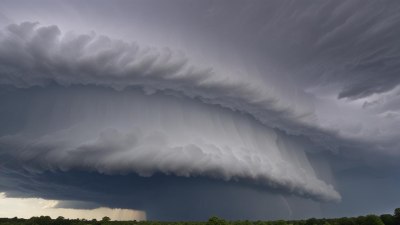What Are Microbursts and Why Pilots Fear Them
Discover the dangers of microbursts and understand why they are a serious concern for pilots.

Image by galynaandrushko on Freepik
Microbursts are intense localized downdrafts that can occur during thunderstorms, leading to sudden and severe wind shear. These weather phenomena pose significant risks to aircraft during takeoff and landing phases, making them a serious concern for pilots and flight safety. Understanding what microbursts are, their formation, and the challenges they present is crucial for anyone interested in aviation.
To grasp the concept of microbursts, one must first understand the broader context of thunderstorm activity. Thunderstorms are complex systems fueled by moisture, instability, and lift. As these storms develop, they can produce various phenomena, including lightning, heavy rain, and hail. However, one of the most dangerous outputs of thunderstorms is the formation of microbursts, which are often hidden within the storm’s precipitation.
How Microbursts Form
A microburst forms when a column of air rapidly descends from a thunderstorm. This downdraft accelerates as it falls, sometimes reaching speeds of over 100 mph. When this air hits the ground, it spreads out in all directions, creating dangerous wind shear conditions. The sudden change in wind direction and speed can have a catastrophic impact on an aircraft attempting to land or take off.
Types of Microbursts
Microbursts can be categorized into two types: wet microbursts and dry microbursts. Wet microbursts occur in rain-bearing storms where precipitation falls with the downdraft, while dry microbursts happen in drier conditions, where the air descends without significant precipitation. Regardless of the type, both pose unique challenges for pilots as they can create conditions that vary rapidly and unpredictably.
The Immediate Danger
The immediate danger of a microburst lies in its ability to produce abrupt changes in wind direction and speed over a very short distance. For pilots, particularly during the critical phases of takeoff and landing, these changes can overwhelm the aircraft's control surfaces, potentially leading to loss of control. Statistics show that microbursts have been implicated in several aviation accidents, further highlighting the need for pilots to be acutely aware of their presence.
Detection and Avoidance
Modern aircraft are equipped with advanced meteorological instruments capable of detecting wind shear and microburst conditions. However, these systems are not infallible, and microbursts can occur with little warning, especially in obscured or severe weather conditions. Pilots receive extensive training on how to identify early signs of microbursts and strategies for avoiding them, such as staying updated on weather information and understanding the characteristics of thunderstorms.
Case Studies of Microburst Incidents
Several notorious incidents involving microbursts underscore the importance of awareness and preparedness. One of the most notable cases occurred in 1985 when Delta Air Lines Flight 191 crashed while attempting to land at Dallas/Fort Worth International Airport. The aircraft encountered a microburst that altered its approach path, ultimately leading to loss of control and a tragic accident that claimed 137 lives. This event, along with others, prompted the aviation community to enhance training, technology, and safety protocols regarding microbursts.
The Role of Technology
Advancements in technology have significantly improved the ability of pilots and air traffic controllers to predict and respond to microbursts. Doppler radar systems can identify wind patterns associated with microbursts, allowing for real-time updates on hazardous conditions. Further, devices like predictive wind shear alerts enhance situational awareness for pilots, helping them make informed decisions in critical moments.
Microbursts represent one of the many unpredictable challenges faced by pilots navigating the skies. Their sudden and violent nature makes understanding and recognizing them vital for aviation safety. As technology continues to advance and knowledge about these phenomena expands, pilots are better equipped to manage the risks associated with microbursts, ensuring safer skies for all. Continuous training and awareness are paramount in adapting to the evolving landscape of aviation weather hazards, as understanding microbursts remains a key component of a pilot's education and safety protocols.











